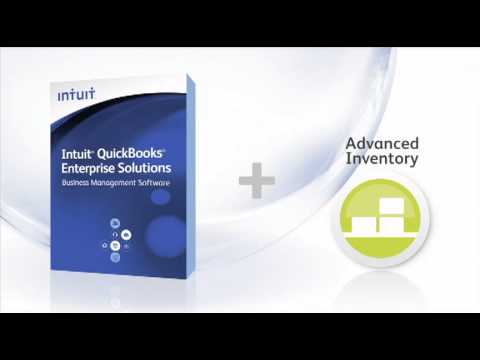Content
There’s no more Jones Realty to take control of the performance obligation — or to pay them! Avoiding “phantom revenue” from this situation is one reason why it’s good they don’t record their collections as income right away.
- The account is similar in nature to the work in process account used to accumulate inventory job costs.
- Expenditures incurred from inception to date represent costs incurred from the start of the project to the date of estimation.
- When there is unpredictability in determining when a client is going to pay, contractors use the completed contract method of accounting.
- Meanwhile, in both years, the recognition of cash position and construction-in-progress accounts is the same as the US GAAP standard.
- The day of completion for a contract job oftentimes requires extension for a variety of reasons.
The two primary https://intuit-payroll.org/ methods for financial and tax reporting are the Completed Contract method and the Percentage of Completion method. The completed contract method is an accounting technique used to report revenue from long-term contracts. Under this method, contractors recognize revenue once all deliverables specified in the contract have been completed and delivered to the customer. When there is unpredictability in determining when a client is going to pay, contractors use the completed contract method of accounting. Since it’s easy to ascertain that a project has been finished, all costs are calculated at the end of the contract. A preferred accounting method for residential projects and other short-term contracts is that the completed contract method features simplicity due to the shifting of liability. The completed contract method has certain advantages for some contractors.
Who can use the completed contract method?
Email for more information and sign up for our Construction Services newsletter here. Meanwhile, in both years, the recognition of cash position and construction-in-progress accounts is the same as the US GAAP standard. The company obtained a building construction contract worth Rp400 for two years. Assume, the company incurs a cost of Rp220 in the first year and Rp80 in the second year. Only after the customer has approved the contract, contractor records the accounting in its books of accounts. It is used by the company when unpredictability prevails concerning collecting the funds from customers. Tax BenefitTax benefits refer to the credit that a business receives on its tax liability for complying with a norm proposed by the government.
- In the construction industry, two accounting approaches have developed over the years regarding the recognition of revenue.
- All such information is provided solely for convenience purposes only and all users thereof should be guided accordingly.
- Available-for-sale securities are securities bought and held primarily for sale in the near term to generate income on short-term price differences.
- In addition, under the completed contract method, there is no need to estimate costs to complete a project – all costs are known at the completion of the project.
- With this method revenue, expenses and gross profit are deferred until the completion of the contract.
- And this demonstrates another reason why point-in-time recognition may be appropriate for them to use.
It may happen that the contract is completed in the 2nd year, but the contractor already receives all the money & the tax is higher due to higher profits. At the end of the construction, which ended up being 9 months instead of 8 months, the company pays the $5 million to WAY. But the actual cost for the project amounted to $4.5 million dollars. Because the project is completed Bob will recognize revenue in the amount of $5 million and the actual cost of construction of $4.5 million. The completed contract method should be used when contracts have multiple deliverables and it is difficult to determine the amount of revenue that will be recognized under the percentage of completion method. Consult with your project-specific CPA when selecting or choosing the pertinent revenue recognition method.
Completed Contract Method – Explained
Retained earnings at the end of the period are equal to retained earnings at the beginning of the period plus net income minus liabilities. Strategic management is the process of determining the right mix of operating activities for the type of organization, its plans, and its markets. An airline’s long-term leases of its jets are examples of current liabilities.
NV5 GLOBAL, INC. MANAGEMENT’S DISCUSSION AND ANALYSIS OF FINANCIAL CONDITION AND RESULTS OF OPERATIONS. (form 10-K) – Marketscreener.com
NV5 GLOBAL, INC. MANAGEMENT’S DISCUSSION AND ANALYSIS OF FINANCIAL CONDITION AND RESULTS OF OPERATIONS. (form 10-K).
Posted: Fri, 24 Feb 2023 19:27:04 GMT [source]
What Is The Completed Contract Method liabilities alongside long-term business goals must be part of your considerations when choosing a revenue recognition method. The percentage of completion method is advocated for by the IRS for long term construction or manufacturing contract projects.
What is Overbilling? | Construction Industry Accounting
Once Build-It Construction completes the contract, they may finally move these onto the income statement. To clear the full contract amount from Progress Billings, they’ll perform a debit, then credit revenue. To recognize the costs of the contract, they’ll credit Construction in Progress and debit their expenses. When contracts are of such a short-term nature that the results reported under the completed contract method and the percentage of completion method would not vary materially.
The percentage-of-completion and completed contract methods are often seen in construction companies, engineering firms and other businesses that operate on long-term contracts for large projects. Since income and expenses are often deferred during work on these long-term projects, companies seek to defer tax liabilities as well. If a contractor’s average annual gross receipts exceed $10 million then the Internal Revenue Service will consider that a large contractor. Large contractors must use the percentage of completion method, which is a type of accrual accounting. The percentage of completion method involves estimating the finish date of the contract and recognizing income based on the work completed. The contractor will need to have an idea of when the contract will be completed to determine a percentage of how much was completed at year end when it comes to tax time.
What Are “Back Charges” in Construction?
For example, if a company needs to apply for credit from a bank, it may be challenging to prove how much revenue the company generates using the completed contract method. For longer-term projects in which revenue and expenses might be earned and paid out at various intervals throughout the project’s lifetime, companies can use the percentage of completion accounting method.




